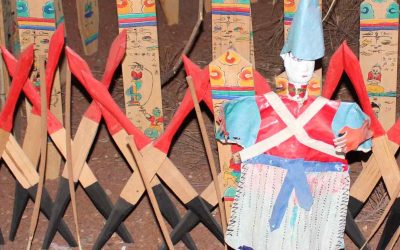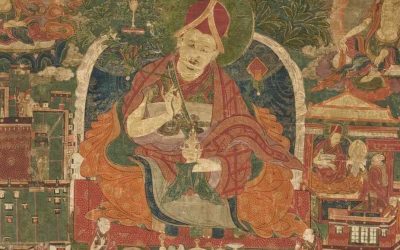Tibetans, the people who descend from the monkey
According to an ancient myth, the Tibetans originated from the union of an ogress (raksasi) and a monkey. The monkey was sent by Avalokitesvara, Mother Buddha, to sow the seed of Buddhism in these lands.
One day, an ogress approached the monkey and tried to tempt him to marry her. At first the monkey refused, but the ogress continued:
«If you do not marry me, I will become the wife of a devil and give birth to countless children and grandchildren. In future times this plateau will become a world full of devils and thousands of people will be killed. So please do as I have told you.»
Full of doubts, the monkey consulted Avalokitesvara on how he should act, who replied that such a marriage was his destiny and a good deed for Tibet. So they finally married and had five children who learned to speak, lost their tails and became the ancestors of the Tibetan people.
This story is very popular in Tibet, found in myths, legends and wall paintings. Its reflection has remained forever in toponymy, for the name Tsetang, the place where its kings are said to have originated and its most ancient spiritual center, means in Tibetan «the place where monkeys play».
It is curious to note that long before Charles Darwin formulated his theories of evolution in which it is affirmed that man descends from the monkey, in some lands the intuition of this phenomenon already existed.
Last posts
History of the Yao of China
History of the Yao of China The Yao consider that Panhu is their ancestor. A mythical figure placed in the center of their most important myths that had real existence for them. Some of the modern specialists agree that Panhu is, in fact, a mythified local hero, which...
Interpretation of dreams among the Yao
Interpretation of dreams among the Yao The Yao have a complex system of dream interpretation, which, like other neighboring peoples, they divide into auspicious and unfortunate. For them, to dream of the sun setting behind a hill announced a calamity upon the parents....
The Monastery of Sera – History and foundation
The Monastery of Sera - History and foundation Sera Monastery, located on the outskirts of Lhasa, is one of the largest monasteries in Tibet, and one of the most important centers of learning. Still today many young Tibetans come to the monastery to be trained in the...
The monasteries of Tibet- the soul of the land
The monasteries of Tibet- the soul of the land One of the most charismatic aspects of Tibetan culture is its monasteries. Mention Tibet to anyone, at least in the West, and they will immediately associate that word with the monasteries and their monks. Those...
The Llubhu, women shamans of the Naxi
The Llubhu, women shamans of the Naxi The llubhu (also called sunyi) are the Naxi sorcerers or sorceresses. In ancient days they were always women, mediums who went into trances and claimed to see ghosts, the spirit of the deceased persons. They have the power of...
Sakya Monastery and its impressive art treasures
Sakya Monastery and its impressive art treasures Sakya Monastery is located 165 kilometers west of Shigatse, on the road to Tingri, and is a must-see for all travelers who can spare a little time to explore central Tibet, as well as those who end (or begin their...










